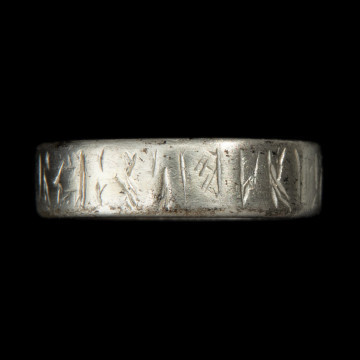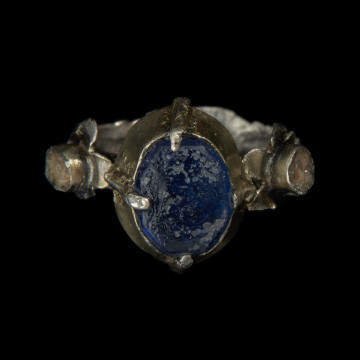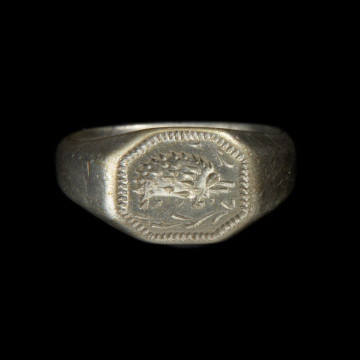
Wedding ring
przełom XIV i XV wieku
National Museum in Szczecin
Part of the collection: Szczecin treasure from Podzamcze
In late medieval ornamentation, the rosette motif was famous not only in architecture. This floral and plant decoration was used in clothing and jewellery as well. Rosette buttons made of precious metals decorated the clothes of wealthy townspeople and patricians, which is proven by iconographic sources and archaeological findings. A unique set of decorative silver buttons was found in Szczecin Podzamcze, in a treasure of ornaments and coins hidden in a metal vessel under the floor of one of the bourgeois tenement houses at Targ Rybny (the Fish Market). Buttons as clothing fasteners became popular in the 14th century in connection with the spread of tight-fitting clothing, especially narrow sleeves. Wealthy bourgeois and patricians of Szczecin were inspired by the fashion of other Hanseatic cities, especially Lübeck and Stralsund, with which Szczecin was connected by strong trade ties. The costume ornaments were a sign of wealth and refined taste of the wearer and a marker of his position in the hierarchical society of the late Middle Ages. On the other hand, the artistry is a good indication of the superb craftsmanship and artistic skills of goldsmiths using sophisticated decoration methods, including filigree and granulation.
Małgorzata Peszko
Author / creator
Dimensions
cały obiekt: height: 2 cm
Object type
menswear
Creation time / dating
Creation / finding place
Identification number
Location / status

przełom XIV i XV wieku
National Museum in Szczecin

National Museum in Szczecin

przełom XIV i XV wieku
National Museum in Szczecin
DISCOVER this TOPIC
National Museum in Szczecin
DISCOVER this PATH
Educational path